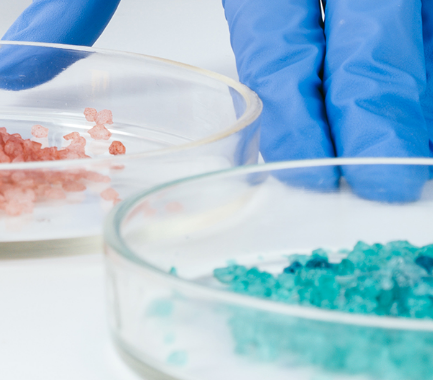Your contact
PENPET-Team - Hamburg

Laurens Rogowski
Sales
Tel. +49 (0) 40 - 675 7 99 80
sales@penpet.de
Get in touch with us.
Hexahydrophthalic anhydride (HHPA)
Hexahydrophthalic anhydride is mainly used in the chemical industry as a monomer for polymerization processes. The compound belongs to the cyclic carboxylic acid anhydrides. However, hexahydrophthalic anhydride is not usually the direct result of dehydration of the corresponding carboxylic acid. Instead, it is produced from phthalic anhydride by a nuclear hydrogenation. The addition of six hydrogen atoms in this reaction gives hexahydrophthalic anhydride its name.
Hexahydrophthalic anhydride is used as a starting material for the manufacture of polyester resins, binders and paints. Among other things, it contributes to greater weather resistance of the polymerization product and better resistance to UV light. Compared to phthalic anhydride and isophthalic acid, which are cheaper to produce, the compound also causes the polymers produced to have a lower viscosity. As a result, there is less need to add potentially environmentally harmful solvents to the end product.
At PENPET you can easily and reliably order the required amount of hexahydrophthalic anhydride. We look forward to receiving your inquiry for an individual offer. Deliveries are made in liquid form in ISO tank containers or as solids in 1,100 kg IBC containers and 200 kg drums.
CAS no. 85-42-7
EINECS no. 201-604-9
Molecular formula: C8H10O3
Synonyms: Cyclohexane-1,2-dicarboxylic anhydride, 1,2-cyclohexanedicarboxylic anhydride, hexahydrophthalic anhydride, HHPSA, HH-PSA, HHPA
Application examples: Production of polyester resins, binders and paints, use as anhydride for curing epoxy resins, raw material for PVC plasticizers, intermediate product for alkyd resins and rust inhibitors
More Information
Hexahydrophthalic anhydride consists of a ring structure of cyclohexane to which two carboxylic acid groups are attached. These are located on adjacent carbon atoms of the cyclohexane, are connected via an oxygen atom and together form an anhydride. Hexahydrophthalic acid can be formed from this by absorbing a water molecule. The double functional group results in the reactivity of hexahydrophthalic anhydride and its suitability as a comonomer for polymerizations.
Hexahydrophthalic anhydride is a glassy solid. At room temperature, it is already close to its melting point and can therefore easily be processed as a melt or liquid. The compound is colorless and odorless. Hexahydrophthalic anhydride fumes are heavier than air and may spread along floors.
Hexahydrophthalic anhydride is only slightly soluble in water, but reacts slowly on contact with it to form hexahydrophthalic acid. Dry storage is therefore required. Hexahydrophthalic anhydride is readily soluble in various organic solvents such as acetone, ethanol, benzene or chloroform.
Hexahydrophthalic anhydride reacts with strong acids, bases, oxidizing agents, amines and alcohols, generating a lot of heat. The compound attacks iron and reacts with it to form self-igniting iron phthalate.
Hexahydrophthalic anhydride is flammable, but not explosive. When heated and burned, hexahydrophthalic anhydride decomposes into hazardous gases such as carbon monoxide and carbon dioxide.
Due to its harmful effects on the respiratory tract, hexahydrophthalic anhydride has been classified as a "substance of very high concern" in accordance with the REACH regulation of the European Union. A harmful concentration of particles of the substance in the air can be reached quickly, among other things when dispersing as a powder. Inhalation of the compound may cause severe irritation, persistent respiratory sensitization and allergic reactions, and bronchial asthma.
Contact with the skin should also be avoided. This can cause irritation and allergic skin reactions. Eye burns can result in impaired or loss of vision and require extensive rinsing and prompt ophthalmological attention. Ingestion of the substance can cause coughing, fever and nausea.
Hexahydrophthalic anhydride is considered to be slightly hazardous to water and harmful to aquatic organisms. The compound should not be released into the environment.
